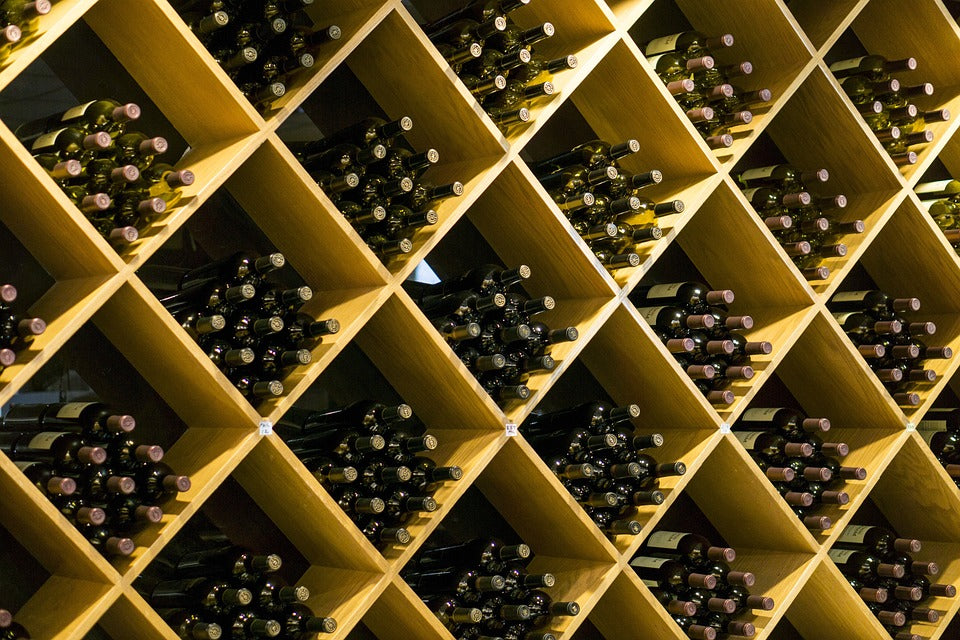
5 Wine Regions Emerging Due to Climate Change
Climate change is having a significant impact on the wine industry, leading to changes in the regions where grapes are grown and the types of grapes that can be grown. As a result, new wine regions are emerging, offering exciting new opportunities for wine lovers and producers alike. From England to China, from Greece to New Zealand, these regions are producing high-quality wines and gaining recognition in the industry. It's worth keeping an eye on these regions as they continue to grow and evolve in the future. Here are five wine regions that are emerging due to climate change:
England
With warmer temperatures, England is becoming a popular destination for wine production. The southern and eastern regions of the country, such as Kent and Sussex, are particularly well-suited to growing grapes due to their warmer microclimates. In recent years, English sparkling wine has gained recognition and awards for its quality, and it's becoming a serious competitor to Champagne.
Canada
Canada's wine regions, particularly those in British Columbia, are also benefiting from climate change. Warmer temperatures are allowing grapes to ripen more easily, leading to an increase in the production of high-quality wines. The Okanagan Valley in British Columbia is a particularly promising region for wine production, known for its Pinot Noir and Chardonnay.
China
China has a long history of wine production, but it has traditionally been limited to the northern regions of the country. However, with climate change, new wine regions are emerging in the south, such as in the province of Yunnan. The warmer temperatures in these regions are allowing grapes to ripen more easily, leading to an increase in the production of high-quality wines.
Greece
Greece is known for its ancient wine-making tradition, but it has traditionally been limited to specific regions such as Santorini and Crete. However, with climate change, new wine regions are emerging in the country, such as the island of Chios and the region of Thrace. These regions are known for their Moschofilero and Xinomavro grapes respectively.
New Zealand
New Zealand is known for its Sauvignon Blanc and Pinot Noir, but with climate change, new wine regions are emerging in the country. The warmer temperatures in these regions are allowing grapes to ripen more easily, leading to an increase in the production of high-quality wines. The regions of Gisborne and Hawke's Bay are particularly well-suited to growing grapes due to their warmer microclimates.
How the Winemakers Are Responding to Climate Change
Climate change is having a significant impact on the wine industry, leading to changes in the regions where grapes are grown and the types of grapes that can be grown. Winemakers are having to adapt to these changes in order to continue producing high-quality wines. Here are some ways that winemakers are responding to climate change:
- Planting new grape varieties: As temperatures rise, traditional grape varieties may no longer be well-suited to certain regions. Winemakers are experimenting with new grape varieties that are better able to withstand the changing conditions. These new varieties may be more resistant to disease and pests, and may be better able to ripen in warmer temperatures.
- Irrigation: With changing weather patterns, winemakers are having to adapt to droughts and water shortages. Many winemakers are turning to irrigation systems to ensure that their grapes have enough water to grow.
- Adapting viticulture techniques: Winemakers are adapting their viticulture techniques to the changing conditions. This can include things like changing the time of year that grapes are pruned, or altering the way that grapes are trained on the vine. These changes can help grapes to ripen more easily and to be better protected from disease and pests.
- Investing in technology: Winemakers are investing in technology to help them to better understand and adapt to the changing conditions. This can include things like weather monitoring systems and precision agriculture techniques, which can help winemakers to make more informed decisions about when to plant, when to harvest, and how to manage their vineyards.
- Sustainable Practices: Winemakers are also increasingly adopting sustainable practices, such as reducing their carbon footprint and minimising the use of chemicals in the vineyard. This not only helps the environment but also helps to increase the resilience of the vineyards to the changing conditions.
The adoption of sustainable practices not only helps the environment but also helps to increase the resilience of the vineyards. As the climate continues to change, it will be important for winemakers to continue to adapt and evolve in order to ensure the continuation of high-quality wines.
What Are the Best Climatic Conditions to Grow Wine
Wine grapes are a temperamental crop that require specific climatic conditions in order to thrive. The ideal conditions for growing wine grapes vary depending on the grape variety, but there are certain factors that are important for all wine grapes.
Temperature
Wine grapes require a long, warm growing season in order to ripen properly. The ideal temperature range for grapevines is between 50-70°F (10-21°C). The temperature should be consistent and not fluctuate too much, as this can cause stress on the vines.
Sunlight
Wine grapes require a lot of sunlight in order to ripen properly. The grapes should receive at least six hours of direct sunlight per day during the growing season. This can be a challenge in regions with a lot of cloud cover or rainfall.
Rainfall
Wine grapes need a consistent supply of water throughout the growing season. However, they are also susceptible to disease and rot if they are exposed to excessive moisture. The ideal amount of rainfall for wine grapes is between 20-30 inches per year.
Soil
Wine grapes require well-draining soil that is rich in minerals. The soil should also have a balanced pH level, ideally between 6.0-7.0.
Wind
Wind can have both positive and negative effects on wine grapes. On one hand, wind can help to dry out the grapes and prevent disease. On the other hand, wind can damage the grapes and the vines. The ideal wind conditions for wine grapes are moderate and consistent.
Some of the best regions for wine grape cultivation include California, France, Italy, Spain, Chile, Argentina, South Africa, and Australia. These regions have the ideal combination of temperature, sunlight, rainfall, soil, and wind conditions that allow wine grapes to thrive.
However, it's important to note that there are many other regions around the world that are suitable for growing wine grapes, and new regions are being discovered all the time.








